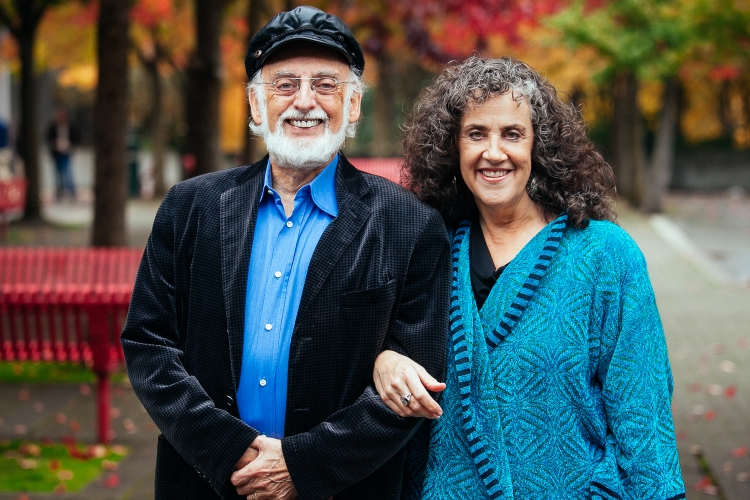
Relationships
The Magic Relationship Ratio
By: Najla Moussa
Remember that comment your partner made that you couldn’t shake off? Or the mistake you’re still fixated on? Turns out this isn’t us acting neurotic. It’s just our brain’s ‘negative biases in play.
Let’s backtrack for a moment. In the earliest stage of the brain’s information processing area, is something called a ‘negative bias’ (also known as negativity effect). This bias simply means that our brain is more sensitive to unpleasant or negative thoughts, interactions, and events than we are to positive or neutral ones.

Why? Well, this one go back to our ancestors, who relied on the negative bias to stay out of harm’s way. Their very survival depended on being constantly alert to any dangers, and through evolution, our negative bias has become automatic and holds more weight in our brain.
Unsurprisingly, negative bias plays a really large role in our relationships. But while conflict is inevitable in all relationships, according to the Gottman Institute, ‘the difference between happy and unhappy couples is the balance between positive and negative interactions during conflict.’ Turns out, there is a very specific ratio that makes love last.
A study conducted by John Cacioppo, Ph.D., at the University of Chicago, provided evidence on just how heavily our attitudes are influenced by negative news. In one experiment, he showed people pictures that would provoke feelings of positivity (like pizza), then images that bring up negative feelings (dead bodies), and those that stir up neutral feelings (a blow dryer, for example). Meanwhile, he recorded the electrical activity in the brain’s cerebral cortex that is involved in information processing. His findings demonstrated that the brain reacts more strongly to stimuli it considers negative.
Dr. John Gottman and Robert Levenson began studying couples in the 1970s for nine years. They would ask couples to allow them to watch while they solved a conflict in their relationship. They followed up with these couples nine years later. The result was that they could predict with 90% accuracy which couples stayed together and which divorced based on their conflict solving style.

What they discovered is that happy couples have a “magic ratio” and it is required for a relationship to succeed. That magic ratio is 5 to 1. Yes, shocking. But because our negative bias weighs more on our brain, we need five positive interactions for every negative one for our relationship to succeed.
“When the masters of marriage are talking about something important, they may be arguing, but they are also laughing and teasing and there are signs of affection because they have made emotional connections,” says Dr. Gottman on the Gottman Relationship Blog. “On the other hand, unhappy couples tend to engage in fewer positive interactions to compensate for their escalating negativity.”
Couples that have a deeply unhealthy relationship (that is veering towards divorce) have a positive-negative ratio of 1-to-1 or less.
So how do stable couples interact positively? Here are a few different ways:
Be Interested: This includes asking open-ended questions, maintaining eye contact, and other subtle signals that demonstrate that you are listening.
Express Affection: You can still show affection during the conflict. Try touching your partner when explaining your point of view or when trying to calm them down. Physical and verbal affection can reduce stress and tension and bring you closer together.
Demonstrate They Matter: The Gottman motto for making a marriage last is “small things often.” It’s always the small things over long periods that can make or break a relationship. Rubbing your partner’s back after a long day, picking up dinner when they’re too tired to cook, calling during the day to show they’re on your mind – these are all simple gestures that go a long way.
Show Intentional Appreciation: We tend to focus on our partner’s negative traits as opposed to the positive ones. But by choosing to focus on their positive traits and the good moments of the marriage, we feel more positive and infuse our relationship with that kind of energy.
Find Opportunities for Agreement: Imagine if we concentrated on the things we agree on as opposed to the things we disagree on? What a novel idea! But when we seek opportunities for agreement and express ourselves accordingly, we are showing that we see our spouse’s viewpoint as valid and that we care about them. An alliance in conflict, even minor, can fundamentally shift how couples fight.
Empathize and Apologize: Empathy is one of the deepest forms of human connection. When you empathize with your spouse, you show that you understand what your partner is feeling. This can be done nonverbally – through a facial expression, or verbally – via a physical gesture. Also remember – we need to own up to our art in every conflict, no matter how minor we believe our role is in perpetuating that argument. In every fight, we can take responsibility for our part in it. Doing so allows our partners to see that we aren’t blaming them alone. When we do that, they are more willing to own up to their actions and work with us on solving the problem.
Accept Your Partner’s Perspective: An approach that drastically improves conflict is understanding that each of your perspectives is valid, even if they are opposed to each other. While you may not agree with your partner’s perspective, validating their experience or point of view will show them that you respect them.
Make Jokes: Playful teasing, silliness, and finding moments to laugh together can ease tension in a heated conflict. Most couples have inside jokes they only share. This highlights the exclusivity a couple has. However, a word of caution: remember to find a way to joke around that maintains respect and appreciation for your spouse and that serves to bring you both closer together.
Knowing the power of the negativity bias helps us in two major ways: It allows us to understand why we hold onto the bad stuff more than the good stuff in our marriage, and it makes us more conscious of the fact that we need to bring more positivity in our marriage to offset the negativity. When we view challenges to understand each other better, we are more likely to see conflict as an opportunity to grow – individually and as a couple.










0 comments